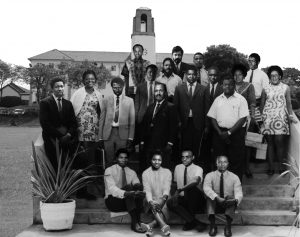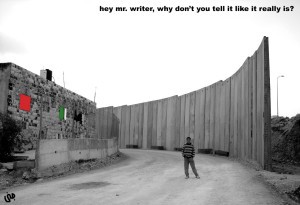Ronald Suresh Roberts argues that litigation in US courts against multinational companies who did business with apartheid South Africa distracts from, and distorts, the insidious injustice that has seen local mega-beneficiaries escape prosecution for their crimes against humanity.
“Power means never having to raise your voice.”
Despite the intentions of its sponsors, the New York federal case brought against companies accused of complicity in apartheid more than a decade ago illustrates the wisdom of this aphorism, which I have heard attributed to Harry Oppenheimer.
I have no idea whether Oppenheimer ever said it, but the litigation in New York certainly vindicates the sentiment, as his own empire remains largely unscathed by the zealous attentions of the plaintiffs. The sponsors of the litigation behave as though they wish to call apartheid business to account for complicity with a system that they correctly indict as a crime against humanity. Yet, the more that one descends into the details of the legal argument and counter-argument, the more the central corporate wrongdoers and beneficiaries of the system slip from view, relegated to the sidelines.
What we are left with is both sideshow and Shakespearean dumb show; a mere kind of mime; and also the sound of silence: people talking without speaking, to cite Simon and Garfunkel from that famous concert in Manhattan’s Central Park.
Start with the list of defendants: Johannesburg mining house capital, central beneficiaries of apartheid and its illiberal precursor systems dating back a century and a half, are wholly absent from the frame. This is a direct consequence of the litigants’ choice of a US forum. The case must be limited to those with sufficient jurisdictional contacts in the USA. But from the 1940s, the US legal authorities were continuously keen to arrest as price-fixers the central figures of the Oppenheimer empire (specifically those who were active in the Central Selling Organisation, which controlled diamond sales). So they stayed away.
As the New York Times reported on 10 July 2004:
De Beers, the world’s largest diamond producer, has agreed to plead guilty to criminal price fixing, a court official and a lawyer involved in the case said on Friday. The move ends a decade-long case and paves the way for the company to return to the United States after an absence of nearly half a century.
Perversely, even as the promoters of the ostensibly antiapartheid litigation were training their sights upon such peripheral players as Ford, Barclays and IBM, the Oppenheimer empire, that originated in the warlordism of Cecil Rhodes, was itself working undetected behind the scenes to resolve its own ostensible and longstanding criminal liability within that same US jurisdiction – and its efforts faced no grassroots or activist opposition whatsoever.
Thus, a bird in the hand escaped to the bush and a wild goose chase took centre stage. And the supposed champions of free markets in South Africa escaped criminal charges (pending since 1947) relating to precisely to what the US authorities themselves alleged was the subverting of free markets by monopoly capital. The plaintiffs in the civil case against De Beers were successful in 2008 and, after various technical skirmishes, the initial payments to them actually commenced in March 2013. But once again, local activists seem oblivious to this. That is the first problem with the apartheid litigation against multinational corporations: its opportunity cost. It is a distraction from the principle that not only charity, but more so justice, ought to begin at home.
In assessing the opportunity cost, consider the weight of the offences alleged against the multinationals as against those that were overlooked by at-home perpetrators. During the 20th century, apartheid mines took more than 100,000 lives – a lucrative and systematic slaughter. By contrast, the kinds of anecdotal offences brought together in the New York pleadings, while serious and genuinely painful, also seem slightly beside the main point.
It is indeed offensive that one plaintiff would not be given a Barclays job in white-zoned Cape Town and had instead to work in a bantustan. It is regrettable that IBM technology facilitated the production of apartheid paperwork and that Ford employees were victimised for their political activities. But these are isolated details in a broader tapestry within which the US companies singled out were merely bit players.
The US litigation sits uneasily alongside both the logic and the processes of South African domestic laws that have been set up as the mechanism for dealing with past abuses. This uneasiness takes two forms. First, proponents of the Truth and Reconciliation Commission (TRC) sensibly rejected “judicialisation” of historical debates – for several good reasons.
One of these is that trial briefs do not make good history. The pleadings in the New York litigation repeatedly make claims that the companies went beyond the requirements of apartheid law (as though staying within those laws would have relieved them from liability or moral blame); that they enforced oppressive policies from their “own desire” (as though corporations have “desire”); that they targeted “non-violent” opponents of apartheid (as though “violent” opposition to apartheid was illegitimate); that the defendant companies refused to comply with the Sullivan principles (which actually were a windowdressing meant to disarm anti-apartheid sanctions); and so on. The plaintiffs in the case are well aware of such distortions, but were presumably persuaded to plead thus because of the vagaries of legal technicality in the New York forum – which is precisely why they should not have gone there in the first place.
A second reason is that senior South African judges were likely to be untransformed in and after 1994 (and to some extent still are), which explains the acquittals of Magnus Malan and the score of other apartheid generals who were actually put on trial in the mid-1990s, as well as the acquittal of “Dr Death”, Wouter Basson, by an old-school Pretoria judge, Willie Hartzenberg, in 2002. Since 2005, when the Constitutional Court overturned a prior determination that South African courts could not claim jurisdiction over crimes allegedly committed outside South Africa, no trial of Basson for such extra-territorial crimes, such as use of chemical weapons against the frontline states, has been attempted. Again, activist attention to possibilities for local prosecution has been non-existent. The New York litigation instead seeks to gain the attention of foreign courts in regard to South African matters.
There are other problems. The second form that this uneasy intersection of US and South African legal processes takes is that judicial processes in any event make for individualised, rather than systemic, redress – the threadbare membership of the “class” in the ostensibly class action-type New York litigation itself bears this out. These and similar arguments were thoroughly canvassed in the extensive South African debates surrounding the set-up of the TRC in the mid-1990s. In a sense then, what the litigants need to place on trial, but which they fail to address, is the adequacy – in conception as well as outcome – of the TRC process itself. Instead of making the necessary direct critique of the TRC and its chairperson, Desmond Tutu, the plaintiffs uncritically cite Tutu’s suggestion that nothing in the Truth and Reconciliation Act or proceedings prevents litigation against multinational corporations. But this merely begs several questions.
Above all: does anything in the TRC process prevent the launching of actions against local, as opposed to foreign companies – and if so, why is that? Here one stumbles across an ambiguity in what might otherwise seem to be a plain story of Good versus Evil in pursuing the multinationals in a foreign country. The ambiguity is this: how vigorously did Desmond Tutu himself, and his TRC, pursue apartheid’s most heinous perpetrators and beneficiaries within South Africa itself?
Have we forgotten that when P.W. Botha refused to appear before the TRC, Desmond Tutu could have subpoenaed him to appear (and jailed him for contempt had he refused) but in the event backed down from doing so? Or that the TRC initially wavered over whether and how to call local business to account at all, eventually opting to hold hearings that restricted themselves to feeble generalities and that were presided over by TRC Deputy Chairperson Alex Boraine, who in the early 1970s actually worked in the public relations department of Anglo American and so was the proverbially safe pair of hands? He ought to have recused himself, but didn’t. In other words, the morally charged focus on the historically marginal multinationals in New York courts simply functions to let local mega-beneficiaries off the hook yet again.
My friend Dumisa Ntsebeza, who is both a plaintiff in the New York action and a former TRC commissioner, knows, better than most, that the true story of the failure of accountability has to do with the ways in which the internal debates of the TRC were diverted from accountability and captured by liberal and illiberal platitudes, such as acknowledgement of what was called “the perpetrator within us all”. Why can this story not be more frankly told?
Instead of a frank and authentic critique of South African corporate powers’ morbid tango with racism during (and before) apartheid, we are left with a distorted attempt to place the square peg of the apartheid legacy into the round hole of the legal and doctrinal requirements of the US federal courts. The radical sentiment and rhetoric associated with such litigation turn out, upon scrutiny, to be decidedly conservative: a mere part of a gigantic evasion.

This story features in the December 2013 edition of the Chronic. Available here in print or as a PDF. The issue offers forays into interlaced subjects of power, resistance, protest, mobilisation, mobility and belonging.
[button link=”http://www.chimurenga.co.za/chimurenga-shop” color=”red”]Buy the Chronic[/button]



